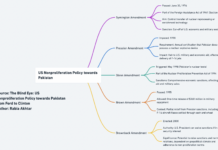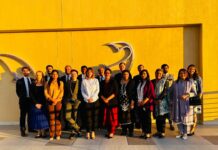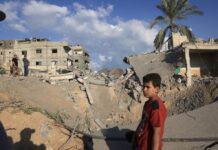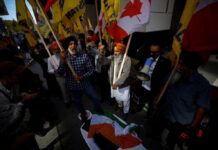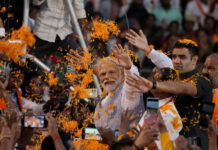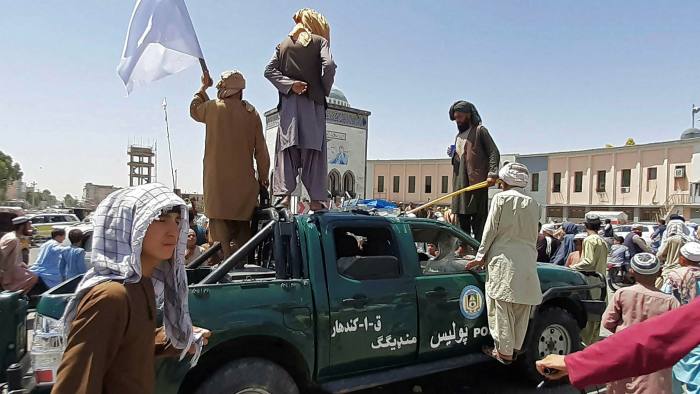Sabtain Ahmed Dar
In January 1989, most of the Soviet forces went back home yet the inner ring of Kabul defenses was active to protect the government. For instance, on land, the famous Hill 31 protected by sandbags, two 122mm howitzers, and a T-62 tank played a crucial role in preventing Kabul from falling to the Mujahedeen. To the north east of Kabul, there was an airbase where Colonel Alexander Golonov had a serious task at hand. His objective was to keep the airfield open round the clock until the last Soviet soldier had left Afghanistan. Although the Soviet Union had achieved a kind of a stalemate against the United States in the war, it did not stop its support to the Kabul government and the ‘Greens’, as the Soviets called the Afghan Army. At the Kabul airport, Ilyushin military transport aircraft used to arrive after every few minutes from Tashkent. On the other hand, after the Geneva Accords, which were signed in April, 1988, the United States lost the will to finish the war.
Ironically, at the end of the Soviet- Afghan War, both the Soviet Union and United States stood on a common ground to prevent Kabul from falling to the Mujahedeen. As for United Sates, such as eventuality would have replaced one adversary with another. The Soviets were equally fearful of the rise of Islam in Afghanistan which had great implications for the religious feelings in their republics across the Amu Darya. Although it is a common knowledge that General Gromov was the last Soviet soldier in Afghanistan, the truth is that several hundred remained inside Afghanistan in the guise of advisers and tacticians who played a crucial role in the Jalalabad victory, protecting key bases and cities from the Mujahedeen. It was this massive effort by the Soviets and silent United States support from the other end which kept Najibullah’s government alive.
So, what made Kabul’s politico-military dispensation capitulate so quickly this time? There are some key factors to consider. One, the Afghan National Defense and Security Forces (ANDSF) was not only demoralized but also some of its members joined the ranks of the Islamic Emirate. This allowed for the deep infiltration of the ANDSF by the Taliban who imploded it from the core. The evidence can be gathered right from the assassination of General Raziq to the present failure of the ANDSF. Above all, the loss of US air support made the ANDSF completely vulnerable to the Taliban. Two, Taliban’s politico-military strategy paved the way for the wilting of the Kabul government. On the one hand, the Afghan Taliban remained committed to the Doha deal, which gave them recognition at the international level. On the other hand, they continued making territorial gains with a brilliant strategy of locking the provinces by controlling the entry-exit points. Three, Taliban’s swift territorial gains with no resistance whatsoever took the United States by surprise. It was confident that the ANDSF and the Kabul government would be safe and successfully fight the Taliban. The United States utterly miscalculated the ground reality of Afghanistan. Its exit plan was so ill-conceived that it is still unable to effectively evacuate personnel from Kabul.
What’s Next?
It was not expected that the Taliban’s takeover of provincial capitals and later the capital city Kabul would be so rapid, swift, and executed with such finesse that not a single bullet would be fired. The Taliban even surprised U.S. intelligence officials, who recently released a report predicting that Kabul would fall in October, 2021. The Taliban’s takeover of Kabul and the subsequent implosion of Ashraf Ghani administration, Afghan National Army (ANA), and Afghanistan National Police (ANP) on 15th August imply that the emergence of the Islamic Emirate in Afghanistan is inevitable(IEA). This sudden rise of the IEA explicitly portrays that that Taliban did not face any resistance from the Afghans in all the provinces they took over. Things were made easier for the Taliban due to three main factors:
- Incompetence of the Ashraf Ghani administration that mismanaged the wealth of Afghanistan and subsequently failed to provide basic rights to war-torn Afghanistan.
- Inability of the Afghan National Army to confront and combat the Taliban. This ineffectiveness of ANDSF exacerbated after U.S. air support ended.
- Realization of the Afghan people to not put up a fight against the Taliban, as it would only provoke a civil war and eventually damage the country to the core.
In order to predict future pathways, it is important to analyze what message the Taliban have given in their statements since they entered Kabul. The Taliban entered mainland Kabul after 20 years of constant war against the United States and other occupational forces under the umbrella of NATO. Therefore, it was expected that there will be a bloodshed between the Taliban and the Kabul forces, but the Taliban took the world by surprise when they announced that they have come with a message of peace and gave general amnesty to everyone. Taliban also explicitly said that Afghans do not have to leave the country out of panic, as it is their homeland. It is evident that the next step is the Taliban’s formation of the Islamic Emirate in Afghanistan. There are, however, challenges that the Taliban currently face in this regard and if they are successful in meeting those, the emergence of the IEA would become a reality. Five key findings will determine the emergence of the Islamic Emirate of Afghanistan:
- Taliban to have a lion’s share in the government.
2- Formation of a new constitution based on the foundations of Islam.
3– Security of all Afghans, which includes their food, shelter and freedom to prosper in all walks of life.
4– Intra-Afghan talks to establish common ground between the Taliban and the rival parties from central and northern Afghanistan i.e. Doha Talks will play a crucial role.
5- Taliban’s economic partnership and political will to assure the international community and neighbors that Afghan soil will not be used against any other state for terrorism, and rather they will ensure economic integration for peace and tranquility in Central Asia.
Regional Dynamics and Afghanistan Future
It is plain and clear that it was because of Mullah Baradar’s diplomatic acumen that China did not panic, and knew beforehand what was about to unfold in Afghanistan. Baradar emerged to the world as a diplomat for the Islamic Emirate since the start of the Afghan peace process in 2018. Baradar recently made a crucial trip to China, where he met his Chinese counterpart Wang Yi. It can be guessed that Mullah Ghani Baradar had briefed Wang Yi about the facts on the ground in Afghanistan and who is in real control. It is apparent that Beijing’s threat perception hints that regional neighbors must be free from foreign occupational forces. Otherwise, China’s BRI, which is ,arguably, the most important Chinese grand strategic project of the 21st century, will be met with failure. The emergence of the Islamic Emirate and subsequent withdrawal of the United States from Afghanistan are actually in the interest of the Chinese. This is the prime reason why China is not in panic at this moment.
It is evident that China would seek to fill this vacuum of power and Taliban will cooperate with their Chinese counterparts for economic and political gains in the region. For the Islamic Emirate of Afghanistan, the Chinese can play a great role as they not only hold veto power in the United Nations but also have financial and economic heft. China can not only play a crucial in rebuilding post-war Afghanistan but also seek to connect Afghanistan with its global Belt and Road Initiative (BRI). BRI’s flagship project is the China-Pakistan Economic Corridor (CPEC) worth billions of dollars,. Connecting the Islamic Emirate of Afghanistan with this project would establish strong ties between Afghanistan and the Central Asian states. However, the negative implications are too inevitable as these developments would put Indo-US grand strategic objectives in Central Asia in complete jeopardy. The North South Transport Corridor (NSTC) which connects Iran, Afghanistan, and Central Asian states can face a great setback, as China and Pakistan would become counterweights in the north. It is really important for the Islamic Emirate to realize this and establish a pragmatic regional policy based on geo-economics. This policy should seek to engage with every party and not indulge in power politics. The recent comments of Zabiullah Mujahid, Taliban’s spokesperson, augur well. In his first press conference on August 17, he said: “We are in contacts with China, Russia and Pakistan but it does not mean that we are part of any bloc, we want good relations with the international community and everyone.” This implies that Taliban seek to have a policy of neutrality which seems pragmatic, as becoming part of a specific power bloc, especially at this stage, would harm the prospect of stability in Afghanistan.
Sabtain Ahmed Dar is a lecturer at School of Integrated Social Sciences, University of Lahore.



